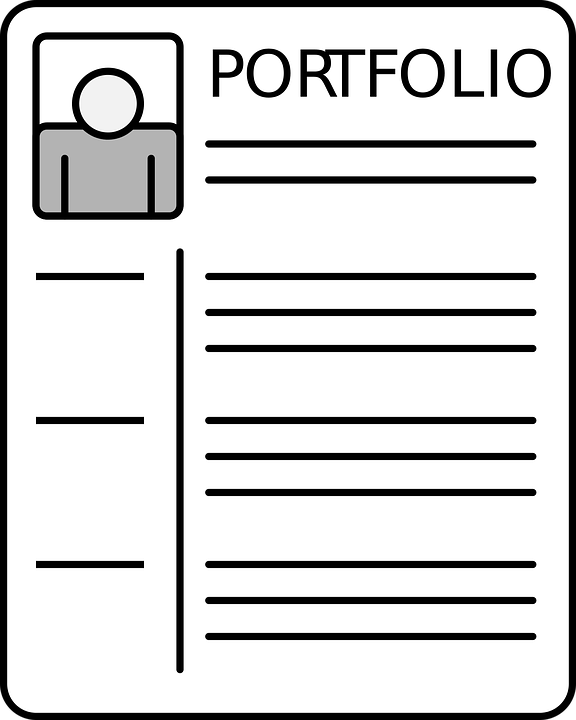Introduction:
To get some insight
into what works (and what doesn't!) When it comes to showcasing online
creative work, here are six easy tips for building a knockout creative
portfolio:
Main Description:
1. Take a step back, and do your best.
Take the time to look at all your work and carefully choose the right pieces for your portfolio. One piece of advice from me was to show the kind of work you always want to do in the future. "Only show projects that you are really proud of, that look great, and that use the best content." Choose at least five projects so that you can demonstrate the scope of your work, but be selected. Remember, it's better than a dozen of these projects where some projects are fine. The quality of your portfolio is as good as your weakest project.
Always show the way you want to work in the future.
2. Use eye-catching photos, and share a backstory.
Now that you've edited the work you want to show, get interested in each project and think about how to best present it. Visitors like to know the story behind your finished work, so think about presenting your process - from the initial concept, to the initial sketches, to the finished product. A good rule of thumb is to present the piece first, then take more detailed shots. To show the precision of your crafts. Stylized photography is a good touch, as long as it's self-contained.
Once you've decided how to set up and explain your project, focus on finding the perfect images or media to showcase the project, starting with the cover image. If you are using a cover to present your projects in a gallery, it is important that your cover is prepared. Your server doesn't have to have an exact image from within your project - you can design a cover if you need the project. For example, you may want to display only text. Combine your cover shape as much as possible.
3. Keep the design of the website simple, and let the work take center stage.
When designing a portfolio, you need a website that is straightforward. You want your content to be the focal point rather than a distraction design.
Your website is a vehicle for people to find your work. You don't want the site to be overly glossy or unconventional - making it difficult to access content. It's not that I prefer minimal designs - it's a question of creating a visual environment where you need to present your work more effectively. Simplicity in the interface and visual design of your website will take your work to the next level.
This means easy navigation and a small amount of website sections. Work gallery and contact page? This is a great portfolio website.
Simplicity in the interface and visual design of your website will take your work to the next level.
When it comes to optimization - choose a font, and keep things constant. A font and sticking to it will make your life easier. Choose a color for each link state that is the same across the site.
4. Create a bio that reflects your unique actions and / or perspectives.
Personalize your "About" page to tell your story, not just list your previous jobs. Here are some key points to revive your resume as a compelled bio:
Share a point of view. As a creative, you have a different perspective on your industry and the creative world. Frame your bio with your creative focus or mission statement.
Create an original story. Share the back story of how you developed your point of view. Have you had any experiences as a child or early in your career that have sparked your passion or shaped your creative direction?
Build on your experience using external details. Match your bio with the details that show your connections through the creative world. Think of notable clients, press, or publications.
Stay tuned. Tell your story with some personal touch. Do you have any hobbies or interests that you depend on? Revealing some of the guilty pleasures keeps your bio accessible and relevant.
Personalize your "About" page to tell your story, not just list your previous jobs.
5. Add specific elements (like awards, your blog), and publish your work.
Now that you've got all the requirements, consider some other specific elements that will give you an edge. Can join.
Mention the awards. If you have a mention in the press or awards, include them.
Invite contact If you are looking for a freelance or contract job, consider using the contact form in your portfolio.
Make sharing easy. Adding your work sharing buttons on social media (like Twitter, Facebook, Google+) can help bring more exposure and audience to your site. Promote your work on social media whenever you add new projects as well as new projects to attract to your overall portfolio.
Add your blog. If you have a blog that updates you frequently, it also represents where you are professionally or who you are. Matthias advises, "A blog needs to add something to your site - otherwise forget about it. No mess."
6. Keep your portfolio fresh.
Remember, your job is not just about building a killer portfolio. You may also want to update it regularly. The best departments are never stable. When you create new and improved work, make sure that you add to the display of your innovative projects, but carefully with the same focus!
Conclusion:
Hope so, you like the article about 'How do I create an online portfolio '.
Keywords:
#Portfolio #OnlinePortfolio #Career





0 comments:
Post a Comment